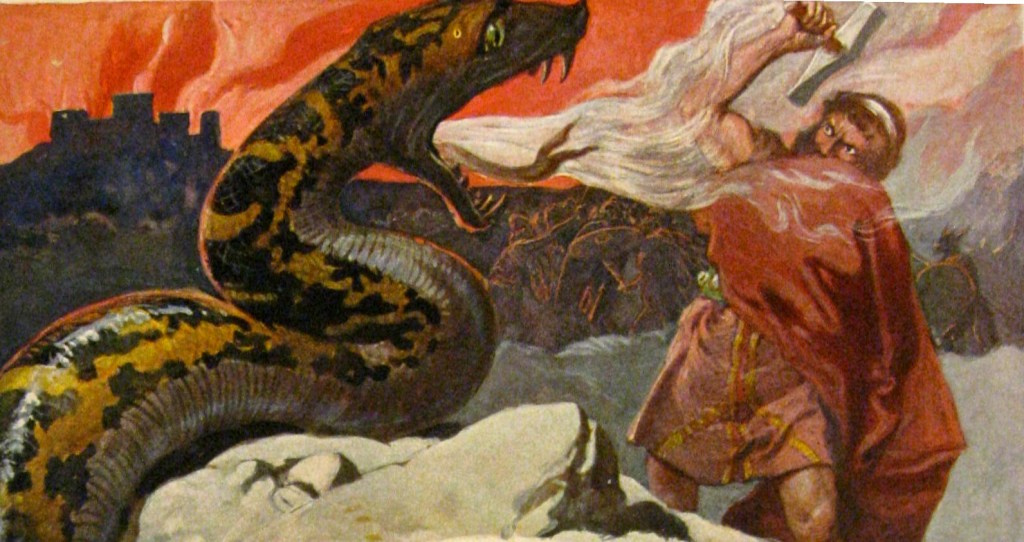Scientists claim giant sea lizards with ‘angry eyebrows’ roamed over North Dakota 80 million years ago
A recent scientific discovery claims that giant sea lizards with “angry eyebrows” roamed the waters over what has become North Dakota more than 80 million years ago.
The new species has been dubbed the Jormungandr walhallaensis – a name derived from both a sea serpent in Norse mythology and the small Dakota town, Walhalla, near where the fossil of the reptile was found several years ago.
The newly discovered reptile is part of the mosasaur species, which were huge sea lizards that lived when the dinosaurs walked the earth, according to the study published last month in the Bulletin of American Museum of Natural History.
“If you put flippers on a Komodo dragon and made it really big, that’s basically what it would have looked like,” said the study’s lead author Amelia Zietlow, who is PhD student in comparative biology.
The study focuses on a fossil that was dug up in 2015 during an excavation in northeast North Dakota where a nearly complete skull, jaws and cervical spine were all recovered, according to the American Museum of Natural History.
The specimen is guessed to be around 24 feet long, and have flippers, a pair of “angry eyebrows” due to a bony ridge on the skull and stumpy shark-like tail.
It is estimated to have lived about 80 million years ago.
The new species includes features in two famous mosasaurs, the study states. A smaller and more primitive mosasaurs called the Clidastes and the much bigger Mosasaurus, which could grow to be about 50 feet long and lived the same time as the Tyrannosaurus rex.

“As these animals evolved into these giant sea monsters, they were constantly making changes,” said Zietlow, of the American Museum of Natural History’s Richard Gilder Graduate School.
“This work gets us one step closer to understanding how all these different forms are related to one another.”
The first mosasaur was discovered more than 200 years ago before this latest study.
“This fossil is coming from a geologic time in the United States that we don’t really understand,” co-author Clint Boyd said.
“The more we can fill in the geographic and temporal timeline, the better we can understand these creatures,” added Boyd, of the North Dakota Geological Survey.
Read the full article Here


